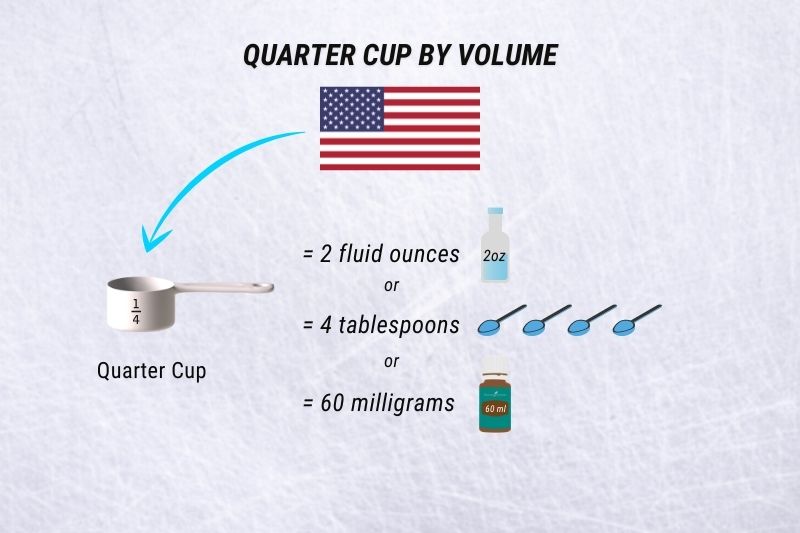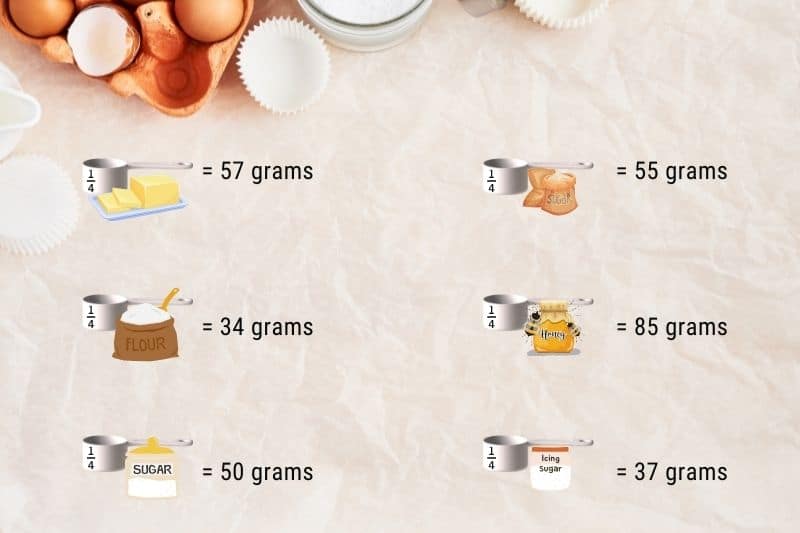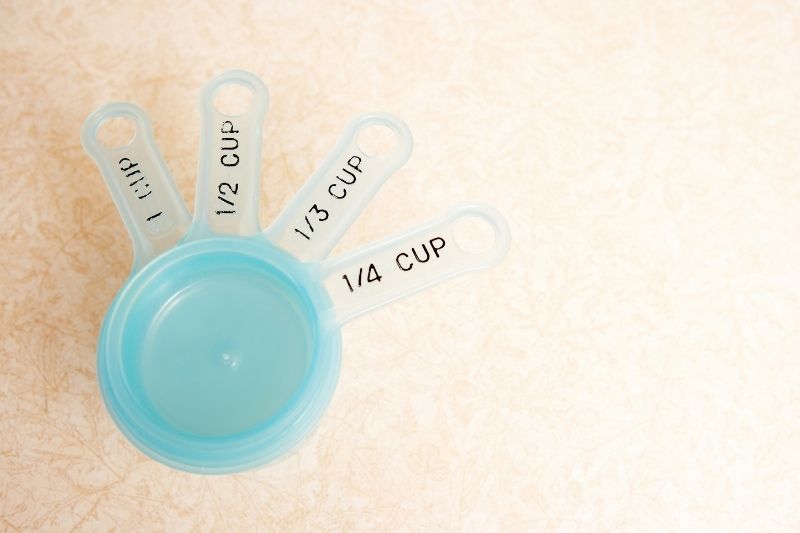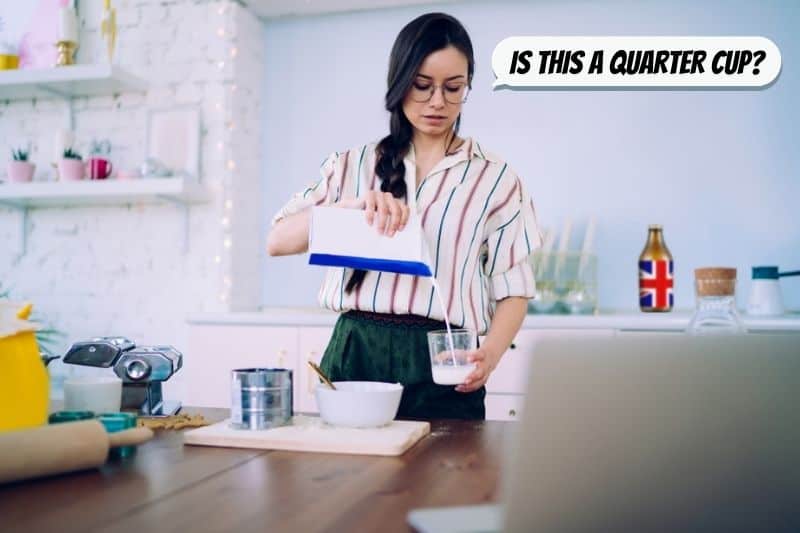The cup system can be a complicated one to get your head around.
Lots of websites offer measurements in both cups and metric measures, but sometimes you will come across a recipe that has you scratching your head and wondering how much of that ingredient is needed.
What Are Cup Measures?
Cup measures are now a mainly US system for measuring either wet or dry ingredients for a recipe.
The user simply fills the cup with the ingredient to the top lip and measures it that way.
Measuring cups can be bought in the UK and often come in a set of varying sizes so that it easy to measure out a whole, half or a quarter of a cup.
How Much Is a Quarter Cup by Volume?

Liquid is often measured in volume rather than by weight and so cup measurements are quite a simple way of measuring liquids.
A standard US cup measurement is the equivalent to 2 fluid ounces which is the same as four tablespoons or 60 ml.
Any volume measuring device can be used to simply convert a quarter cup measure to a different unit.
How Much Is a Quarter Cup by Weight?

This is where cup measurements get a little trickier. A specific volume of flour will weigh a different amount to that volume of sugar, or of butter etc.
So, the equivalent of a quarter cup in UK measures will depend on the ingredient that is being used.
One way of overcoming this is to measure dry ingredients by volume so in this case using a measuring jug and adding flour to the 60ml mark would give you the equivalent of a quarter cup of flour.
But just to get you started here are a few basic ingredients and how much a quarter cup of them would weigh in grams:
- ¼ cup butter – 57g
- ¼ cup flour – 34g
- ¼ cup granulated white sugar – 50g
- ¼ cup packed brown sugar – 55g
- ¼ cup honey/syrup/molasses – 85g
- ¼ cup icing sugar – 37g
Final Advice

Cup measurements can seem confusing at first, especially when trying a new recipe and trying to get your head around quantities and weights and volumes.
If the recipe you are desperate to try only has cup measures as an option and you don’t have access to measuring cups, then the above conversions will be helpful.
One point to remember when following a recipe is to stick to one type of measurement. If you decide to measure one ingredient by volume, then ensure that you also measure the others this way.
If you are converting cups into grams and millilitres for some ingredients, then do this for the entire recipe. This reduces the chances of mistakes when cooking and keeps the ratios of the ingredients correct.
Measuring cups are easily found in the supermarket, online or in high street shops so the simplest way to overcome the hurdle of ingredient conversions would be to treat yourself to a set of measuring cups the next time you’re able to bake with ease.

Chef’s Pick is your guide to the best kitchen equipment and appliances in the UK.
We help you understand the confusing world of cookers, ovens and cookware so you can get the most out of your kitchen.

